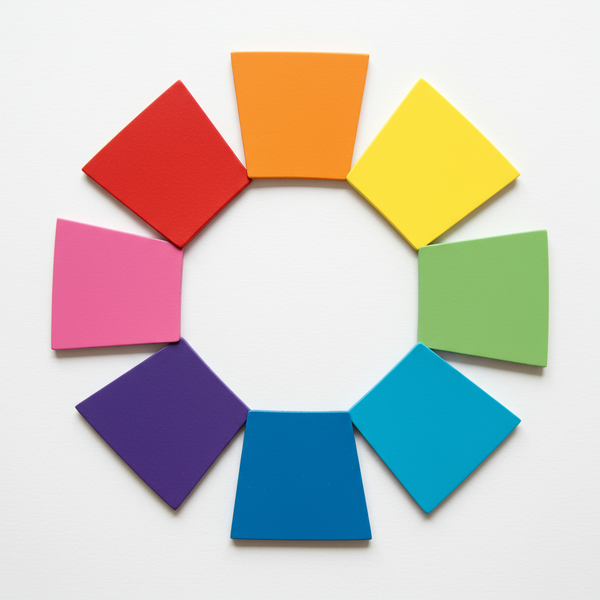How Your Enneagram Type Changes in Stress and Growth

The core of your personality is not a fixed monument; it is a dynamic river, constantly moving and reshaping its banks based on internal and external pressures. While we often celebrate the Enneagram for helping us discover our core motivation—that one true home base—the system’s true genius lies in its ability to map exactly how we behave when life gets challenging, and crucially, how we transform when we commit to real growth. We do not just stay put; we move.
Curious about your core motivations? Chat with Celeste to better understand your Enneagram type.
Understanding the Paths of Dynamic Movement
The Enneagram symbol is a powerful geometric map that depicts nine unique personality types. While the primary focus is usually on the circle connecting the types, the symbol also features specific, straight arrows, which are called the lines of integration and disintegration. These lines are foundational to the system’s utility, illustrating the psychological and emotional paths we inevitably take under certain conditions.
These arrows are the built-in travel lanes of our personality. They represent a fundamental shift in our focus and behavior, allowing us to temporarily adopt the traits of another type entirely. This movement confirms that personality is fluid and adaptable; we possess the potential for high-functioning attributes when we are conscious and self-aware, and we also carry the risk of adopting unhealthy coping strategies when our inner resources are depleted.
Disintegration: Your Stress Response Map
Disintegration describes the specific, predictable psychological path we take when we are stressed, overwhelmed, or operating from a space of low self-awareness. When your typical coping mechanisms fail, your energy shifts along the line of disintegration to the defense mechanisms and behaviors of another type. This is often characterized as “borrowing” the less healthy characteristics of that secondary number.
This movement is not random; it is a built-in warning system. The disintegration point reveals the specific unhealthy traits we adopt when we feel threatened or depleted. This process provides a clear signpost confirming that our reserves are low and our default strategies are failing. Understanding your line of stress offers immediate, actionable insight into identifying your own emotional red flags before you completely burn out.
Integration: Your Blueprint for Health
Integration describes the direct, conscious movement toward psychological health and balance. This path is activated when we commit to self-observation, practice presence, and deliberately choose behaviors that foster genuine well-being. When we move along the line of integration, we intentionally adopt the healthy, high-side traits of the connecting type.
This movement provides the necessary correction to our personality’s dominant fixation. Every Enneagram type has a blind spot—a set of skills or emotional abilities it neglects. The integration point offers precisely those missing capacities, allowing us to become more rounded, flexible, and responsive individuals. Integration confirms our specific path to flourishing and resilience. It is the direction of intentional psychological maturity.
Case Studies in Movement: Type 1 and Type 2
Seeing these movements in action clarifies their power. Let’s look at two distinct types and their unique journeys under pressure and toward growth.
The Dynamic Type 1: The Reformer
Type 1s are fundamentally motivated by the need to be good, right, and principled. They are focused, ethical, and strive for constant improvement. However, when Type 1 faces overwhelming stress, they move to the low side of Type 4 (The Individualist).
Disintegration (Stress) to Type 4: The usually disciplined and objective Type 1 suddenly becomes moody, self-absorbed, and prone to dramatic emotional reactions. They internalize their frustration, becoming deeply critical of themselves and falling into periods of despair and melancholy. The focus shifts from universal standards of rightness to their own unique feelings of deficiency and sadness. This provides an immediate sign that the Type 1 has been operating under unsustainable standards.
Integration (Growth) to Type 7: When Type 1 commits to health, they move toward the high side of Type 7 (The Enthusiast). This grants the Type 1 lightness, spontaneity, and a sense of effortless joy. They learn to relax their rigid inner critic and recognize that life does not require constant perfection. They embrace fun, become less judgmental of others, and access a sense of true freedom and acceptance. This provides the balance needed to maintain their principled ethics without falling into paralyzing rigidity.
The Dynamic Type 2: The Helper
Type 2s are motivated by the need to be loved and appreciated, focusing their energy outward by helping and connecting with others. They are generous, empathetic, and indispensable.
Disintegration (Stress) to Type 8: When the Type 2 feels unappreciated, ignored, or overly used, they move toward the low side of Type 8 (The Challenger). They become aggressive, controlling, and demanding. The generous Type 2 suddenly asserts their own needs with force, often becoming manipulative or resentful of those they have helped. This behavior confirms the Type 2 has depleted their emotional reserves and is trying to take control of their environment to guarantee their value, rather than earning it through selfless giving.
Integration (Growth) to Type 4: When the Type 2 commits to deep self-awareness, they move toward the high side of Type 4 (The Individualist). This shift allows them to finally access their own needs and feelings, focusing inward rather than constantly outward. They understand the difference between true generosity and helping out of a desperate need for appreciation. The Type 2 finds deep, authentic self-worth that is independent of external validation, granting them emotional depth and resilience.
Your Unique Map to Health
The power of the Enneagram’s lines is that they transform the system from a static description of personality into a usable, predictive tool for self-management. These paths confirm that growth is a process, not a destination, and that stress is a specific, manageable experience.
The line of disintegration offers your specific warning signs, pinpointing precisely where you fall apart under pressure. This knowledge provides the opportunity for immediate self-correction. The line of integration provides your unique blueprint for balance, showing you exactly which qualities you need to cultivate to move beyond the limitations of your core type. Understanding these arrows confirms you possess a built-in compass that guides you toward profound self-awareness and unstoppable, sustainable personal growth.




